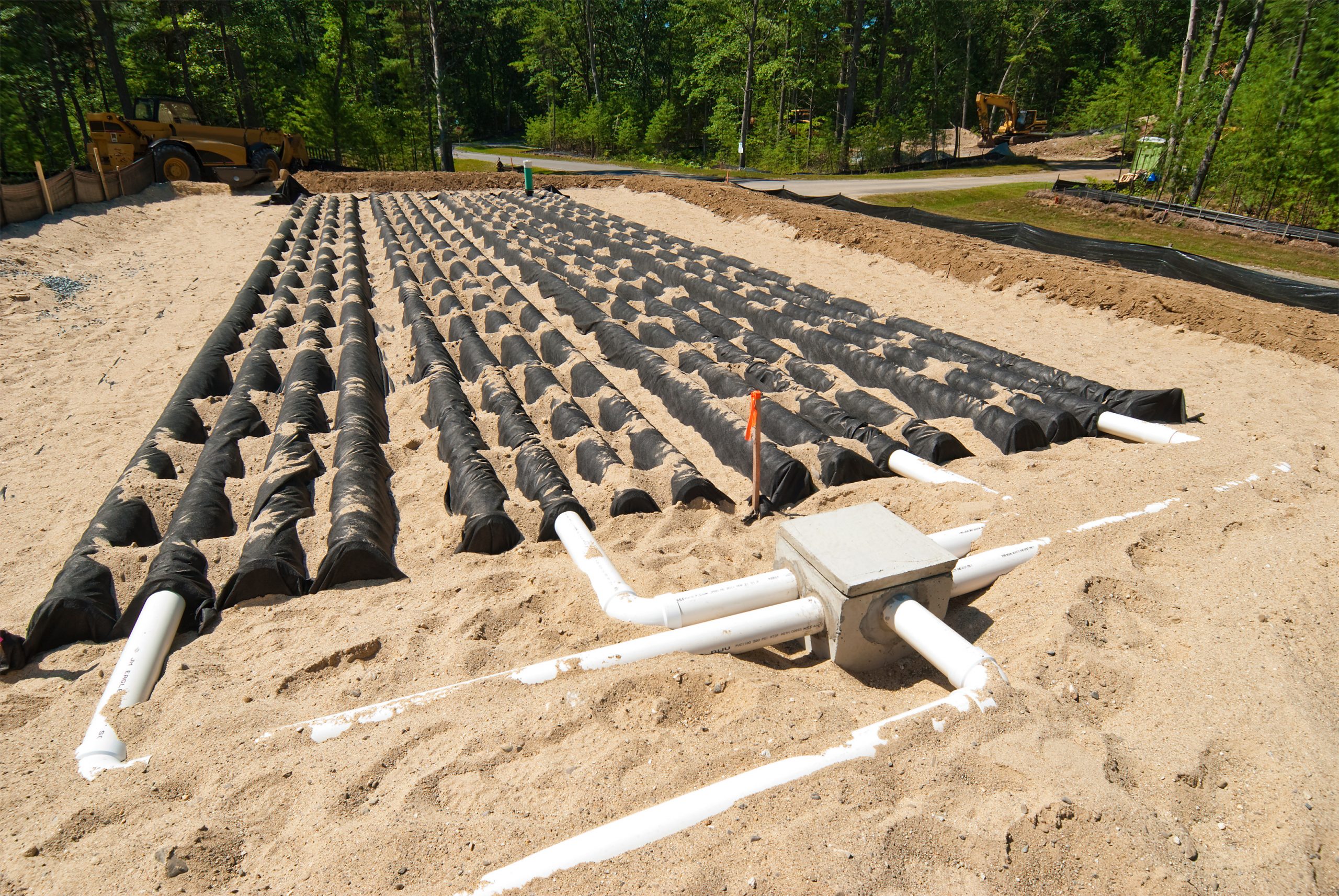Your leach field (also called a drain field) is a critical part of your septic system, responsible for filtering and disposing of wastewater after it leaves the septic tank. However, over time, leach fields can face issues that prevent them from functioning properly, leading to backups, slow drainage, and system failure. At SepTek, we specialize in leach field repair services and can help you understand common leach field problems and how to fix them.
1. Clogged Pipes
Over time, solids from the septic tank can flow into the leach field pipes and clog them, potentially causing issues. This prevents wastewater from flowing through the system properly and can lead to backups or slow drainage.
How to Fix Clogged Leach Field Pipes:
- Hydro-Jetting: Hydro-jetting uses high-pressure water to clear clogs from pipes, restoring proper flow. This method can often resolve minor blockages without needing to replace the pipes.
- Pipe Replacement: If the pipes are too damaged or clogged, they may need to be replaced. This involves digging up the old pipes and installing new ones, ensuring proper wastewater flow.
2. Saturated Soil
Saturated soil occurs when the ground around the leach field becomes too wet to effectively filter wastewater. This is often caused by excessive rain, flooding, or poor drainage. When the soil becomes saturated, wastewater can’t filter properly, leading to standing water or backups.
How to Fix a Saturated Leach Field:
- Rejuvenation: In some cases, the soil can be rejuvenated by aerating it or adding fresh soil. This helps improve water absorption and restore the filtration process.
- Field Replacement: If the leach field is too saturated and rejuvenation doesn’t work, the field may need to be replaced. A new leach field can help restore the system’s function and prevent future saturation.
3. Root Intrusion
Tree roots are naturally attracted to moisture and nutrients, and they can infiltrate leach field pipes. Once inside, roots can cause blockages, pipe damage, and reduced efficiency in the system.
How to Fix Root Intrusion:
- Root Removal: Roots must be manually or mechanically removed from the pipes. Hydro-jetting can also be used to clear small root intrusions.
- Pipe Replacement: In some cases, roots can cause significant damage to pipes. If this happens, the affected pipes will need to be replaced with root-resistant materials to prevent future issues.
4. Excessive Water Usage
Using more water than your septic system can handle puts a strain on the leach field. If too much water enters the system at once, it can overwhelm the soil and lead to improper filtration or backup.
How to Prevent Excessive Water Usage:
- Stagger Water Use: Avoid using water-intensive appliances at the same time. For example, don’t run the dishwasher while doing laundry.
- Install Water-Saving Devices: Low-flow faucets, showerheads, and toilets can help reduce the amount of water entering your septic system.
5. Soil Compaction
When the soil above the leach field becomes compacted due to heavy foot traffic or the weight of vehicles, it reduces the soil’s ability to absorb and filter wastewater properly.
How to Fix Soil Compaction:
- Aeration: Aerating the soil above the leach field can break up compacted layers and improve water flow.
- Avoid Heavy Traffic: Keep vehicles and heavy equipment off your leach field to prevent further soil compaction. Be mindful of planting trees or other plants that could put additional pressure on the area.
How to Prevent Leach Field Problems
Preventing leach field problems starts with regular maintenance. Here are a few tips to ensure your leach field remains in good condition:
- Regular Inspections: Have your septic system, including the leach field, inspected every few years to identify potential problems early.
- Proper Waste Disposal: Only flush toilet paper and human waste—avoid flushing non-biodegradable items like wet wipes or paper towels.
- Maintain Proper Drainage: Ensure that water doesn’t pool near your leach field, as excess water can saturate the soil and cause problems.
- Conserve Water: Minimize water usage to prevent overloading the septic system, which can overwhelm the leach field.
Leach field issues can lead to significant septic system problems if left unaddressed. Regular maintenance, proper water usage, and prompt repairs can prevent costly damage and ensure your system functions properly. If you’re experiencing leach field problems or need repairs, contact SepTek Services for professional assistance.

